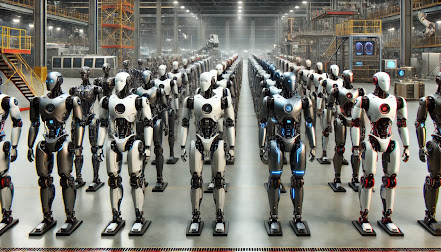Ed Note:
We are currently invested in companies producing 5 of these commodities.
1. Uranium
- Bullish Case: Nuclear energy is experiencing a renaissance, with increasing global support for clean energy. Supply is constrained, and demand is rising with new reactor projects and small modular reactors (SMRs).
- Key Players: Cameco (CCJ), Kazatomprom, NexGen Energy (NXE).
- Risk: Some policy risks if governments shift focus.
2. Copper
- Bullish Case: Essential for electrification (EVs, power grids, renewables), and long-term supply deficits are expected due to lack of new mines. Prices have remained strong.
- Key Players: Freeport-McMoRan (FCX), Southern Copper (SCCO), BHP.
- Risk: Short-term recession could dampen demand.
3. Oil
- Bullish Case: Despite the energy transition, oil demand remains strong. OPEC+ supply cuts and geopolitical risks (Middle East conflicts, Russia sanctions) keep prices elevated.
- Key Players: ExxonMobil (XOM), Chevron (CVX), Saudi Aramco.
- Risk: Demand destruction if global economic slowdown occurs.
4. Natural Gas
- Bullish Case: Europe's pivot away from Russian gas, LNG export growth (U.S. to Europe/Asia), and continued reliance on gas as a transition fuel.
- Key Players: Cheniere Energy (LNG), EQT Corp (EQT).
- Risk: Overproduction could lower prices, mild winters reduce demand.
5. Lithium
- Bullish Case: EV demand remains strong, but overproduction has led to price volatility. Long-term supply chain constraints could tighten the market again.
- Key Players: Albemarle (ALB), SQM, Lithium Americas (LAC).
- Risk: High volatility, price declines if demand slows.
6. Rare Earths
- Bullish Case: Critical for defense, electronics, and EVs. China dominates supply, but Western nations are ramping up production. Supply chain security remains a priority.
- Key Players: MP Materials (MP), Lynas Rare Earths (LYC).
- Risk: Geopolitical uncertainty; rare earth processing is complex.
7. Nickel
- Bullish Case: Needed for EV batteries and stainless steel. Supply disruptions in Indonesia and Russia could support prices.
- Key Players: Vale (VALE), Norilsk Nickel, BHP.
- Risk: EV battery chemistry shifting away from high-nickel designs.
8. Gold
- Bullish Case: Inflation hedge, central bank demand, and safe-haven asset during global uncertainties.
- Key Players: Barrick Gold (GOLD), Newmont (NEM).
- Risk: Interest rate cuts could impact returns.
9. Water
- Bullish Case: Scarcity makes it an essential resource. Water infrastructure, desalination, and privatization could drive investment.
- Key Players: American Water Works (AWK), Veolia (VEOEY).
- Risk: Regulatory constraints on private water ownership.
10. Potash
- Bullish Case: Fertilizer demand is steady due to global food security concerns.
- Key Players: Nutrien (NTR), Mosaic (MOS).
- Risk: Agricultural cycles can impact demand.
- .
Final Thoughts:
For a balanced, stable, and profitable investment in natural resources over the next two years, Uranium, Copper, and Oil seem the strongest plays due to demand-supply imbalances and global energy trends. Natural Gas and Lithium are also good, but face short-term price volatility. Rare Earths and Nickel are critical, but geopolitical risks and tech advancements could impact pricing. Gold, Water, and Potash are more defensive but lack aggressive upside.






